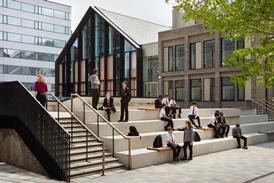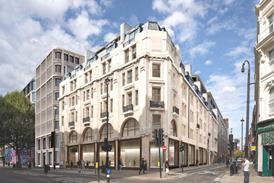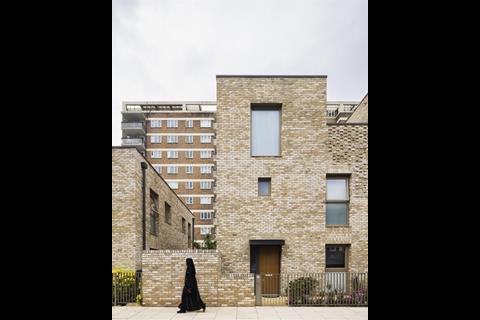As infill housing reshapes council estates, questions arise about the loss of green spaces and amenities. Rory Olcayto advocates for infill and resident-led design as a way to meet housing needs while preserving community spirit

Infilling council estates with new housing is contentious. If you live in a garden-less flat in a dense, polluted part of town, you might argue it’s wrong to reduce communal green space for a few extra homes. But with private developers failing to deliver enough social housing, even on large, ex-council sites, infill housing offers local authorities a way to cut waiting lists.
Trevor Morriss explores this dilemma in his recent article for BD, warning that faith in infill homes as a housing crisis fix could sacrifice community spaces and social infrastructure in the rush to densify urban neighbourhoods. He highlighted six homes planned for a ‘village green’ on a small estate in south London, where a community centre and children’s play space would be demolished. Morriss argues this compromises an ‘already limited local amenity,’ concluding that ‘homes on their own do not make a community.’ He calls instead for solutions that balance housing delivery with the social infrastructure residents need.
We couldn’t agree more – although we think infill housing can do just that. At Dover Court in Islington, for example – which was shortlisted for this year’s Neave Brown Award – local residents backed our plans because we developed them together.
During consultation, we learned that the many fragmented open spaces on the estate were difficult to use and manage and had become ‘unloved’ and unsightly. We demonstrated to residents that, by rearranging and consolidating these spaces, we could create a new London Square as big as the nearby Emirates football pitch. This was easy to visualise and appreciate for the residents, who became advocates for the wider regeneration proposals as a result.
At Dover Court, we also asked what kind of homes were needed and established trust by ensuring residents would be re-housed on the estate. In the end, we delivered 70 new homes – covering a wide range of house types and sizes – along with a community centre at the base of an existing tower, as well as a revitalised public realm – improving the open spaces, pedestrian routes and lighting to fashion a safe and welcoming journey home for all residents. And a brand-new ball court too.
We sympathise greatly with Morriss’s argument but strongly believe infill housing, especially on retrofitted housing estates, will be essential to providing new homes throughout the UK. As the Dover Court exemplar shows, the way to make it work for everyone is quite straightforward: co-design the evolving neighbourhood with existing residents.
>> Also read: Making Richmount Gardens garden-less: What a post-war Blackheath scheme can tell us about our infill addiction
Postscript
Rory Olcayto is a writer and critic at Pollard Thomas Edwards



















No comments yet